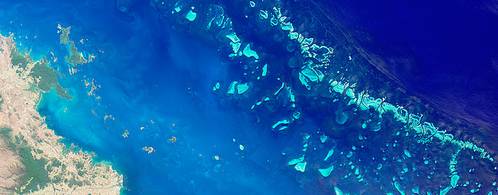Parts of Australia's Great Barrier Reef face permanent destruction if the current El Nino, one of the strongest in two decades, does not ease this month, scientists said on Wednesday.
The El Nino is a result of a warming of the ocean in the western Pacific -- ideal conditions for coral bleaching, where coral expels living algae, causing it to calcify. Coral can only survive within a narrow band of ocean temperature.
The scientists said areas of the Great Barrier Reef, a world heritage site, are experiencing the worst bleaching in 15 years.
Coral around Lizard Island off the tropical city of Cairns has seen the most widespread bleaching, with 80 percent of its coral bleached under unrelenting sunlight, Dr Anne Hoggett, director, Lizard Island Research Station told Reuters.
"Bleaching is a clear signal that living corals are under physiological stress. If that stress is bad enough for long enough, the corals can die," said Dr Russell Reichelt, chairman of the Great Barrier Reef Marine Park Authority said.
"What happens now will be entirely dependent on local weather conditions," said Reichelt.
Scientists said the Great Barrier Reef needs a break in El Nino conditions within weeks if some coral areas are to survive.
The Australian Bureau of Meteorology's most recent forecast calls for a continuation of El Nino conditions.
This year will be the hottest on record and 2016 could be even hotter due to the El Niño weather pattern, the World Meteorological Organization
The Great Barrier Reef stretches 2,000 kms (1,200 miles) along Australia's northeast coast and is the world's largest living ecosystem. It brings in billions of dollars a year in tourism revenue.
UNESCO's World Heritage Committee last May stopped short of placing the Great Barrier Reef on an "in danger" list, but the ruling raised long-term concerns about its future due to climate change.
While the El Nino is set to ease by the middle of 2016, according to the BOM, the weather system - which brings hot, dry conditions to Australia's east coast - is seen as foreshadowing the likely impact of future climate change.
"Coral is the canary in the mine," said Hoggett of the looming threat from climate change.
(Reporting by Colin Packham; Editing by Michael Perry)



 December 2025
December 2025


